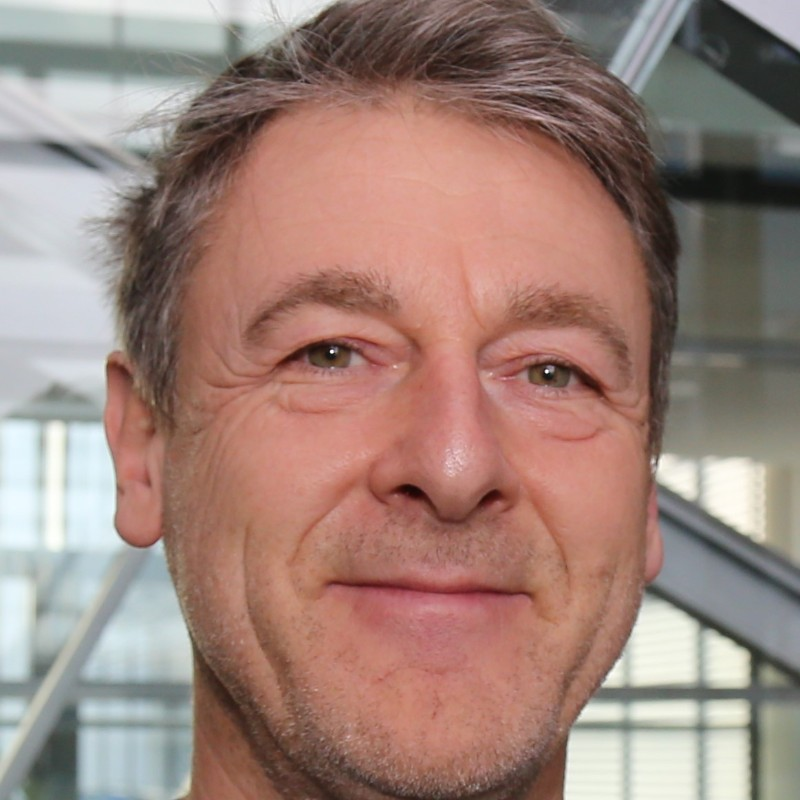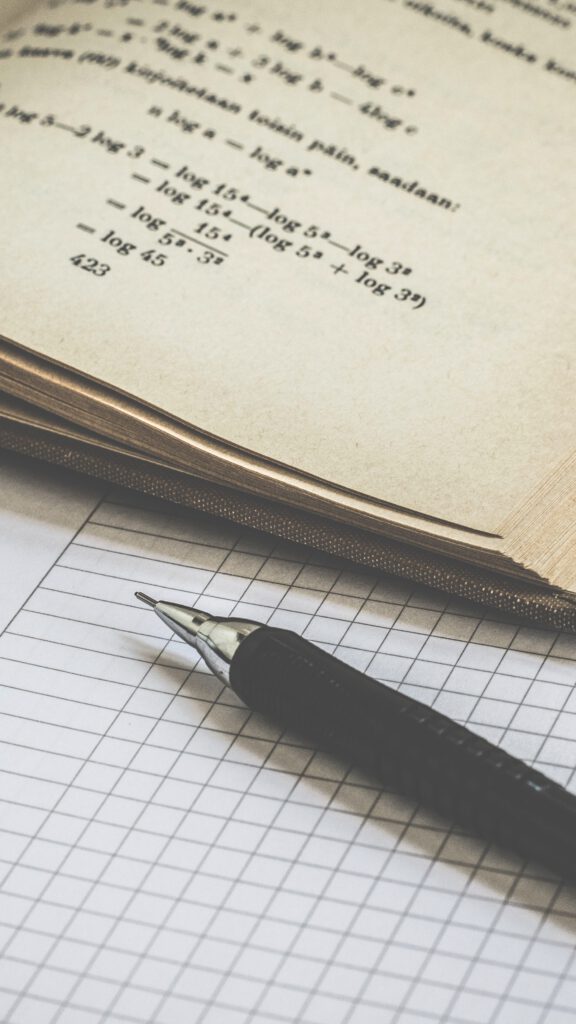Tsirigoni, A.-M.; Göktas, M.; Atris, Z.; Valleriani, A.; Vila Verde, A.; Blank, K. G.: Chain sliding versus β-sheet formation upon shearing single α-helical coiled coils. Macromolecular Bioscience 23 (5), 202200563 (2023)
> DOI
Giacomini, G.; Graziani, C.; Lachi, V.; Bongini, P.; Pancino, N.; Bianchini, M.; Chiarugi, D.; Valleriani, A.; Andreini, P.: A neural networks approach for the analysis of reproducible ribo–seq profiles. Algorithms 15 (8), 274 (2022)
> DOI
Mohr, E.; Hinnenthal, T.; Gryzik, S.; Hoang, Y.; Lischke, T.; Retzlaff, J.; Mekonnen, A.; Paul, F.; Valleriani, A.; Radbruch, A. et al.: Bin-based visualization of cytokine-co-expression patterns of IL-10-producing CD4 T cell subsets. European Journal of Immunology 52 (10), S. 1684 – 1687 (2022)
> DOI
Siciliano, G.; Costa, G.; Suárez-Cortés, P.; Valleriani, A.; Alano, P.; Levashina, E. A.: Critical steps of Plasmodium falciparum ookinete maturation. Frontiers in Microbiology 11, 269 (2020)
> DOI
Thai, E.; Costa, G.; Weyrich, A.; Murugan, R.; Oyen, D.; Prieto, K.; Bosch, A.; Valleriani, A.; Wu, N. C.; Pholcharee, T. et al.: A high-affinity antibody against the CSP N-terminal domain lacks Plasmodium falciparum inhibitory activity. Journal of Experimental Medicine 217 (11), e20200061 (2020)
> DOI
Broeker, N. K.; Roske, Y.; Valleriani, A.; Stephan, M. S.; Andres, D.; Koetz, J.; Heinemann, U.; Barbirz, S.: Time-resolved DNA release from an O-antigen–specific Salmonella bacteriophage with a contractile tail. Journal of Biological Chemistry 294 (31), pp. 11751 – 11761 (2019)
> DOI
Bergues Pupo, A. E.; Göktas, M.; Tunn, I.; López García, P.; Vila Verde, A.; Blank, K.; Valleriani, A.: Goodness of fit testing in dynamic single-molecule force spectroscopy. The Journal of Chemical Physics 149, 244120 (2018)
> DOI
Bühning , M.; Valleriani, A.; Leimkühler, S.: The role of SufS is restricted to Fe−S cluster biosynthesis in Escherichia coli. Biochemistry 56 (14), pp. 1987 – 2000 (2017)
> DOI
Stange, M.; Hintsche, M.; Sachse, K.; Gerhardt, M.; Valleriani, A.; Beta, C.: Analyzing the spatial positioning of nuclei in polynuclear giant cells. Journal of Physics D: Applied Physics 50 (46), 464001 (2017)
> DOI
Wiechecki, K.; Manohar, S.; Silva, G.; Tchourine, K.; Jacob, S.; Valleriani, A.; Vogel, C.: Integrative meta-analysis reveals that most yeast proteins are very stable. bioRxiv (2017)
> DOI
Bartholomäus, A.; Fedyunin, I.; Feist, P.; Sin, C.; Zhang, G.; Valleriani, A.; Ignatova, Z.: Bacteria differently regulate mRNA abundance to specifically respond to various stresses. Philosophical Transactions of the Royal Society of London – Series A: Mathematical Physical and Engineering Sciences 374 (2063), 20150069 (2016)
> DOI
McShane, E.; Sin, C.; Zauber, H.; Wells, J.; Donnelly, N.; Wang, X.; Hou, J.; Chen, W.; Storchova, Z.; Marsh, J. et al.: Kinetic analysis of protein stability reveals age-dependent degradation. Cell 167 (3), pp. 803 – 815.e21 (2016)
> DOI
Rusconi, M.; Valleriani, A.: Predict or classify: the deceptive role of time-locking in brain signal classification. Scientific Reports 6, 28236 (2016)
> DOI
Sin, C.; Chiarugi, D.; Valleriani, A.: Quantitative assessment of ribosome drop-off in E. coli. Nucleic Acids Research 44 (6), pp. 2528 – 2537 (2016)
> DOI
Sin, C.; Chiarugi, D.; Valleriani, A.: Degradation parameters from pulse-chase experiments. PLoS One 11 (5), e0155028 (2016)
> DOI
Valleriani, A.: A conditional likelihood is required to estimate the selection coefficient in ancient DNA. Scientific Reports 6, 31561 (2016)
> DOI
Keller, P.; Rœlly, S.; Valleriani, A.: A quasi random walk to model a biological transport process. Methodology and Computing in Applied Probability 17 (1), pp. 125 – 137 (2015)
> DOI
Keller, P.; Rœlly, S.; Valleriani, A.: On time duality for Markov chains. Stochastic Models 31 (1), pp. 98 – 118 (2015)
> DOI
Rading, M. M.; Sandmann, M.; Steup, M.; Chiarugi, D.; Valleriani, A.: Weak correlation of starch and volume in synchronized photosynthetic cells. Physical Review E 91 (1), 012711 (2015)
> DOI
Sin, C.; Chiarugi, D.; Valleriani, A.: Single-molecule modeling of mRNA degradation by miRNA: lessons from data. BMC Systems Biology 9 (Suppl 3), S2 (2015)
> DOI
Valleriani, A.: Circular analysis in complex stochastic systems. Scientific Reports 5, 17986 (2015)
> DOI
Li, X.; Kolomeisky, A. B.; Valleriani, A.: Pathway structure determination in complex stochastic networks with non-exponential dwell times. The Journal of Chemical Physics 140 (18), 84102 (2014)
> DOI
Li, X.; Kolomeisky, A. B.; Valleriani, A.: Stochastic kinetics on networks: when slow is fast. Journal of Physical Chemistry B 118 (35), pp. 10419 – 10425 (2014)
> DOI
Valleriani, A.; Li, X.; Kolomeisky, A. B.: Unveiling the hidden structure of complex stochastic biochemical networks. The Journal of Chemical Physics 140 (6), 064101 (2014)
> DOI
Deneke, C.; Lipowsky, R.; Valleriani, A.: Effect of ribosome shielding on mRNA stability. Physical Biology 10 (4), 046008 (2013)
> DOI
Deneke, C.; Lipowsky, R.; Valleriani, A.: Complex degradation processes lead to non-exponential decay patterns and age-dependent decay rates of messenger RNA. PLoS One 8 (2), e55442 (2013)
> DOI
Deneke, C.; Rudorf, S.; Valleriani, A.: Transient Phenomena in Gene Expression after Induction of Transcription. PLoS One 7 (4), e35044 (2012)
> DOI
Keller, P.; Valleriani, A.: Single-molecule stochastic times in a reversible bimolecular reaction. The Journal of Chemical Physics 137 (8), 084106 (2012)
> DOI
Rusconi, M.; Valleriani, A.; Dunlop, J. W. C.; Kurths, J.; Weinkamer, R.: Quantitative approach to the stochastics of bone remodeling. EPL 97 (2), 28009 (2012)
> DOI
Zhang, G.; Fedyunin, I.; Kirchner, S.; Xiao, C. L.; Valleriani, A.; Ignatova, Z.: FANSe: an accurate algorithm for quantitative mapping of large scale sequencing reads. Nucleic Acids Research (London) 40 (11), e83 (2012)
> DOI
Menche, J.; Valleriani, A.; Lipowsky, R.: Sequences of phase transitions in Ising models on correlated networks. Physical Review E 83 (6), 061129 (2011)
> DOI
Nagar, A.; Valleriani, A.; Lipowsky, R.: Translation by ribosomes with mRNA degradation: exclusion processes on aging tracks. Journal of Statistical Physics 145 (5), pp. 1385 – 1404 (2011)
> DOI
Rading, M. M.; Engel, T. A.; Lipowsky, R.; Valleriani, A.: Stationary size distributions of growing cells with binary and multiple cell division. Journal of Statistical Physics 145 (1), pp. 1 – 22 (2011)
> DOI
Valleriani, A.; Zhang, G.; Nagar, A.; Ignatova, Z.; Lipowsky, R.: Length-dependent translation of messenger RNA by ribosomes. Physical Review E 83 (4), 042903 (2011)
> DOI
Menche, J.; Valleriani, A.; Lipowsky, R.: Asymptotic properties of degree-correlated scale-free networks. Physical Review E 81 (4), 046103 (2010)
> DOI
Menche, J.; Valleriani, A.; Lipowsky, R.: Dynamical processes on dissortative scale-free networks. EPL 89 (1), 18002 (2010)
> DOI
Valleriani, A.; Ignatova, Z.; Nagar, A.; Lipowsky, R.: Turnover of messenger RNA: polysome statistics beyond the steady state. EPL 89 (5), 58003 (2010)
> DOI
Zhang, G.; Fedyunin, I.; Miekley, O.; Valleriani, A.; Moura, A.; Ignatova, Z.: Global and local depletion of ternary complex limits translational elongation. Nucleic Acids Research 38 (14), pp. 4778 – 4787 (2010)
> DOI
Lipowsky, R.; Beeg, J.; Dimova, R.; Klumpp, S.; Liepelt, S.; Müller, M. J. I.; Valleriani, A.: Active bio-systems: from single motor molecules to cooperative cargo transport. Biophysical Reviews and Letters 4 (1 & 2), pp. 77 – 137 (2009)
> DOI
Lipowsky, R.; Liepelt, S.; Valleriani, A.: Energy Conversion by Molecular Motors Coupled to Nucleotide Hydrolysis. Journal of Statistical Physics 135 (5-6 Sp. Iss.), pp. 951 – 975 (2009)
> DOI
Valleriani, A.; Liepelt, S.; Lipowsky, R.: Dwell time distributions for kinesin’s mechanical steps. EPL 82 (2), 28011 (2008)
> DOI
Valleriani, A.; Meene, T.: Multilevel selection in a gradient. Ecological Modelling 208 (2-4), pp. 159 – 164 (2007)
> DOI
Valleriani, A.: Evolutionarily stable germination strategies with time-correlated yield. Theoretical Population Biology 70 (3), pp. 255 – 261 (2006)
> DOI
Valleriani, A.; Tielborger, K.: Effect of age on germination of dormant seeds. Theoretical Population Biology 70 (1), pp. 1 – 9 (2006)
> DOI
Bastolla, U.; Lässig, M.; Manrubia, S. C.; Valleriani, A.: Biodiversity in model ecosystems, I: coexistence conditions for competing species. Journal of Theoretical Biology 235 (4), pp. 521 – 530 (2005)
> DOI
Bastolla, U.; Lässig, M.; Manrubia, S. C.; Valleriani, A.: Biodiversity in model ecosystems, II: species assembly and food web structure. Journal of Theoretical Biology 235 (4), pp. 531 – 539 (2005)
> DOI
Tielborger, K.; Valleriani, A.: Can seeds predict their future? Germination strategies of density-regulated desert annuals. Oikos 111 (2), pp. 235 – 244 (2005)
> DOI
Valleriani, A.: Algebraic determination of the evolutionary stable germination fraction. Theoretical Population Biology 68 (3), pp. 197 – 203 (2005)
> DOI
Bastolla, U.; Lässig, M.; Manrubia, S. C.; Valleriani, A.: Diversity patterns from ecological models at dynamical equilibrium. Journal of Theoretical Biology 212, pp. 11 – 34 (2001)
> DOI
Cuniberti, G.; Valleriani, A.; Vega, J. L.: Effects of regulation on a self-organized market. Quantitative Finance 3 (1), pp. 332 – 335 (2001)
> DOI
Lässig, M.; Bastolla, U.; Manrubia, S. C.; Valleriani, A.: Shape of ecological networks. Physical Review Letters 86 (19), pp. 4418 – 4421 (2001)
> DOI
Cafiero, R.; de los Rios, P.; Valleriani, A.; Vega, J. L.: Levy-nearest-neighbors Bak-Sneppen model. Physical Review E 60 (2), pp. R 1111 – R 1114 (1999)
> DOI
Cafiero, R.; Valleriani, A.; Vega, J.L.: Damage-spreading in the parallel Bak-Sneppen model. The European Physical Journal B: Condensend Matter Physics 7, pp. 505 – 508 (1999)
> DOI
Valleriani, A.; Vega, J. L.: Damage spreading in the Bak-Sneppen model. Journal of Physics A: Mathematical and General 32 (1), pp. 105 – 114 (1999)
> DOI
Cafiero, R.; De Los Rios, P.; Dittes, F.-M.; Valleriani, A.; Vega, J. L.: Power-law behavior in a nonextremal Bak-Sneppen model. Physical Review E 58 (3), pp. 3993 – 3996 (1998)
> DOI
De Los Rios, P.; Valleriani, A.; Luis Vega, J.: Self-organized criticality in deterministic systems with disorder. Physical Review E 57, pp. 6451 – 6459 (1998)
> DOI
Cafiero, R.; Valleriani, A.; Vega, J.L.: Damage-spreading in the Bak-Sneppen model without noise. The European Physical Journal B: Condensend Matter Physics 4 (4), pp. 405 – 408 (1998)
> DOI
Marsili, M.; Valleriani, A.: Self organization of interacting polya urns. The European Physical Journal B: Condensend Matter Physics 3 (4), pp. 417 – 420 (1998)
> DOI
De Los Rios, P.; Valleriani, A.; Vega, J. L.: Self-organized criticality driven by deterministic rules. Physical Review E 56, pp. 4876 – 4879 (1997)
> DOI
Acerbi, C.; Mussardo, G.; Valleriani, A.: On the form factors of relevant operators and their cluster property. Journal of Physics A: Mathematical and General 30 (9), pp. 2895 – 2913 (1997)
> DOI
Acerbi, C.; Valleriani, A.; Mussardo, G.: Form factors and correlation functions of the stress-energy tensor in massive deformation of the minimal models (E(n))(1)circle times(E(n))(1)/(E(n))(2). International Journal of Modern Physics A 11 (30), pp. 5327 – 5364 (1996)
> DOI
Valleriani, A.: Random walk with a boundary line as a free massive boson with a defect line. Journal of Physics A: Mathematical and General 29 (16), pp. 4885 – 4893 (1996)
> DOI
Ravanini, F.; Valleriani, A.; Tateo, R.: Dynkin TBA’s. International Journal of Modern Physics A 08 (10), pp. 1707 – 1727 (1993)
> DOI
Ravanini, F.; Tateo, R.; Valleriani, A.: A new family of diagonal ADE-related scattering theories. Physics Letters B 293, pp. 361 – 366 (1992)
> DOI
Complete List


